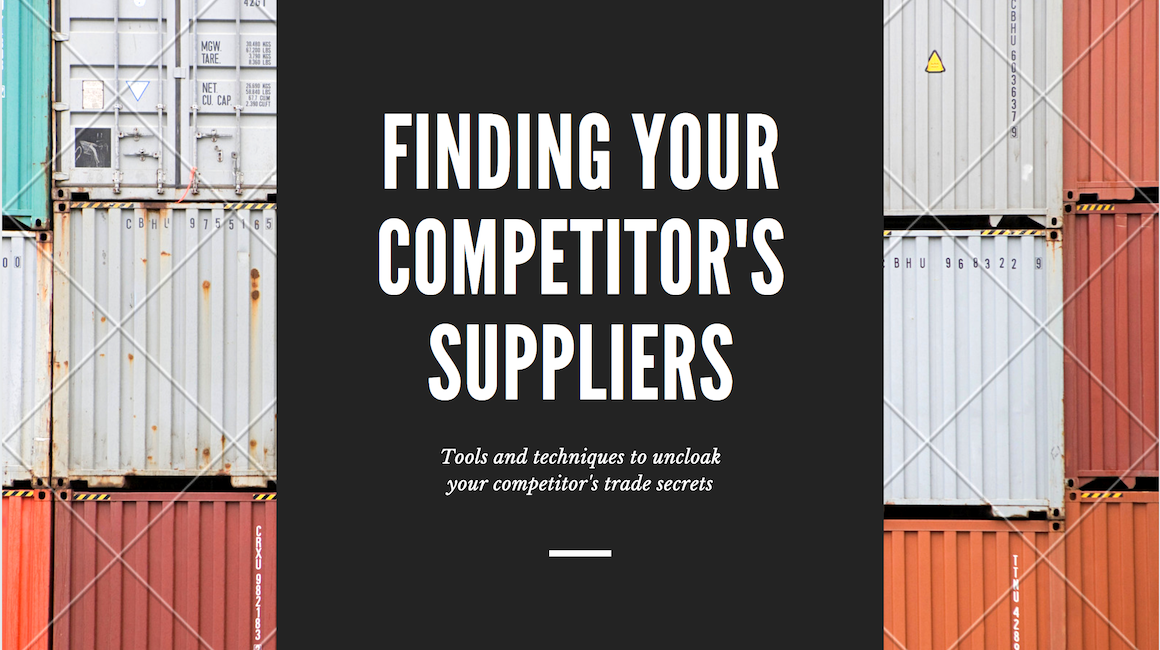Understanding your competitors is key to winning in business. For businesses that have global supply chains, knowing the suppliers of your competitors is like getting the keys to their kingdoms. With their full supplier list, you can learn about their costs, compare with your own suppliers or even verify their marketing claims (are their products really made in the USA?). Read on to see how you can unlock your competitor’s supply secrets in three simple steps.
Step 1 - List your competitors
You may know a few of your competitors by heart, but do you know all of them? If you are planning to start a new business, knowing the landscape of your market is key to determining how tight the competition may be. Some ways to build up your competitor list are as follows:
Search engines and directories
If your competition has an online presence, odds are they will be visible via Google. Just search for your product offerings and see what businesses come up. You should also pay close attention to who is placing search result ads when doing searches that are relevant to your product lines. For brick and mortar businesses or those with a strong local presence, searching for your product + <name of city> on Google will also be a good way to bring up a list of company names that are operating in that particular area.
Apart from Google, you may also want to check review sites such as Yelp or TrustPilot to see reviews and lists of potential competitors.
Talk to customers
Your current customers are often the best source of information on your competitors. After all, your competition is actively trying to win them over as well. Ask your sales team what companies customers always mention as alternatives. Doing this may yield some interesting results as your customers may reveal some companies you never considered opponents yet may be indirectly competing with your offerings.
Look at online communities
In today’s world, your customers will most likely be congregating online. From online forums to subreddits, Quora and even Facebook groups, it is now easier than ever to read the hive mind of your target market. Even the most esoteric and niche market has an online community somewhere, and you should try to find the relevant ones for your business. These places are full of questions and discussions about product recommendations and reviews. By reading through these discussions, you will get a good picture of which companies are in the collective radar of your market.
Step 2 - Search for your competitors in ImportGenius
Now that you have your list of competitor names, it is time to uncover their suppliers. ImportGeniusmakes this super easy. ImportGenius has complete shipment records for all US imports going back to 2008. This data is updated daily with fresh information directly from US Customs. This means that, as long as your competitors imported from overseas, those records will be in ImportGenius. Our big data technology allows you to easily search all of this data to find the key piece of information you are looking for. Apart from US Import Data, ImportGenius also has rich shipping information for Russia, Brazil, India and 13 other countries.
To see this in action, you can search the ImportGenius company database for free using our US Tradebase. Enter the name of your competitors into our tradebase search to see how many records ImportGenius has on them.
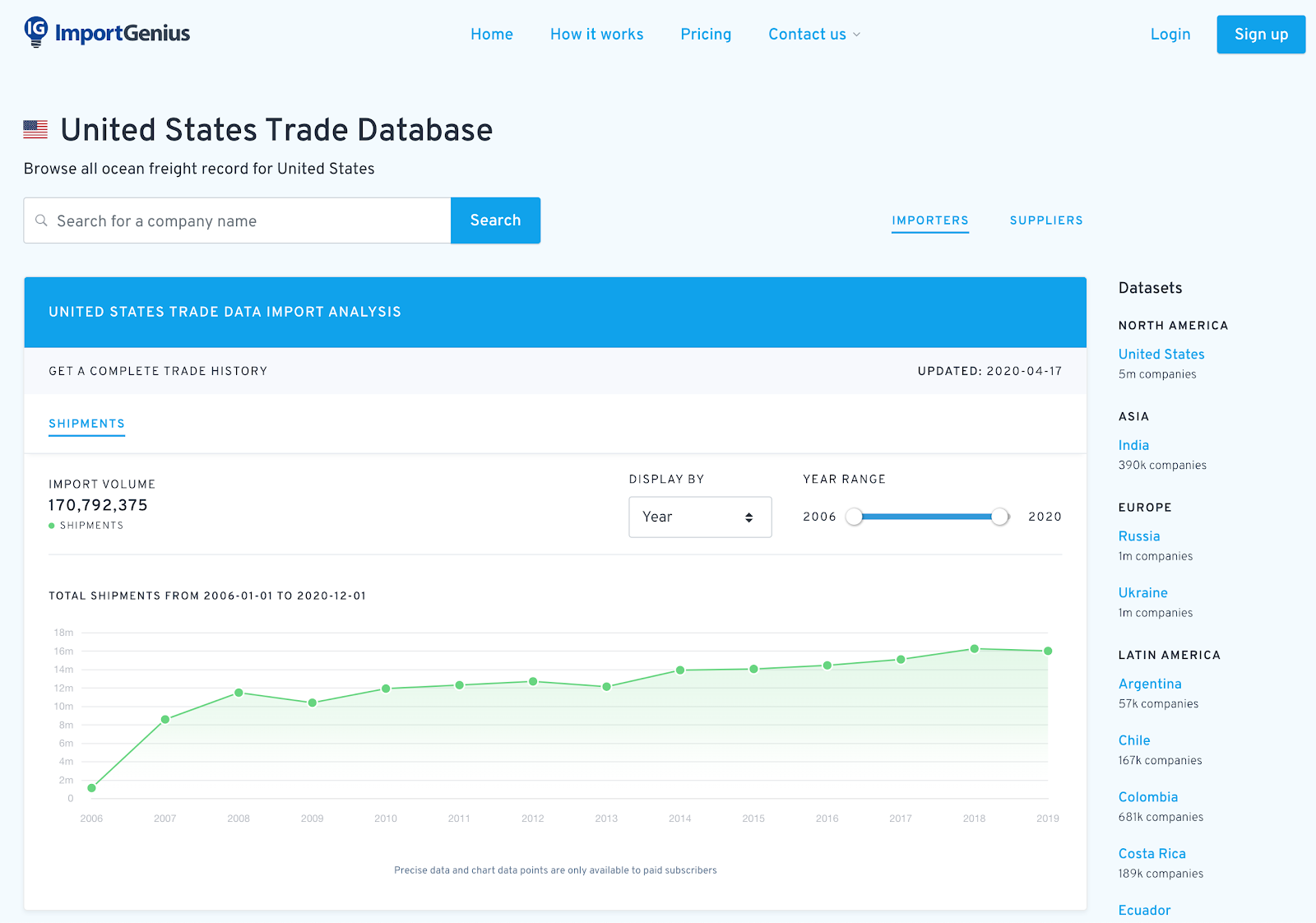

In this example for the activewear company Lululemon, you can see their top 5 trading partners and their top sourcing ports for free. We see that Lululemon’s top two suppliers are Garment Industries in Peru, and Esprinta in Vietnam. Clicking through to those links brings up information on these companies as well. We see that Garment Industries S.A.C. is based in Lima Peru and also supplies to two other companies in the US.
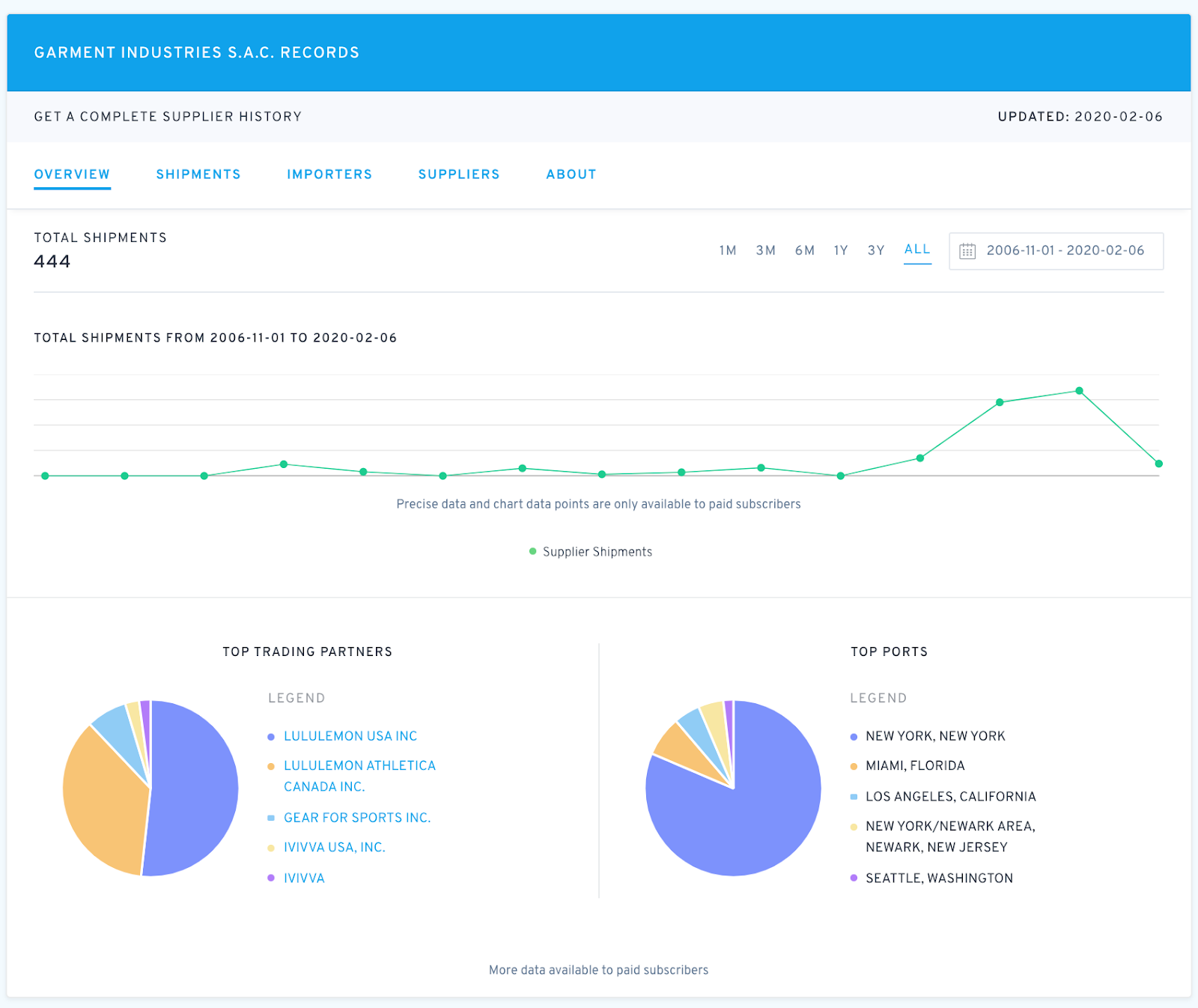
On the other hand, we can see that Esprinta is not only a supplier for Lululemon but for Reebok as well. Clicking the shipments tab of Esprinta shows a preview of 10 shipments they have made, which tells us that this company is a supplier of pants and shorts to Lululemon and Reebok.
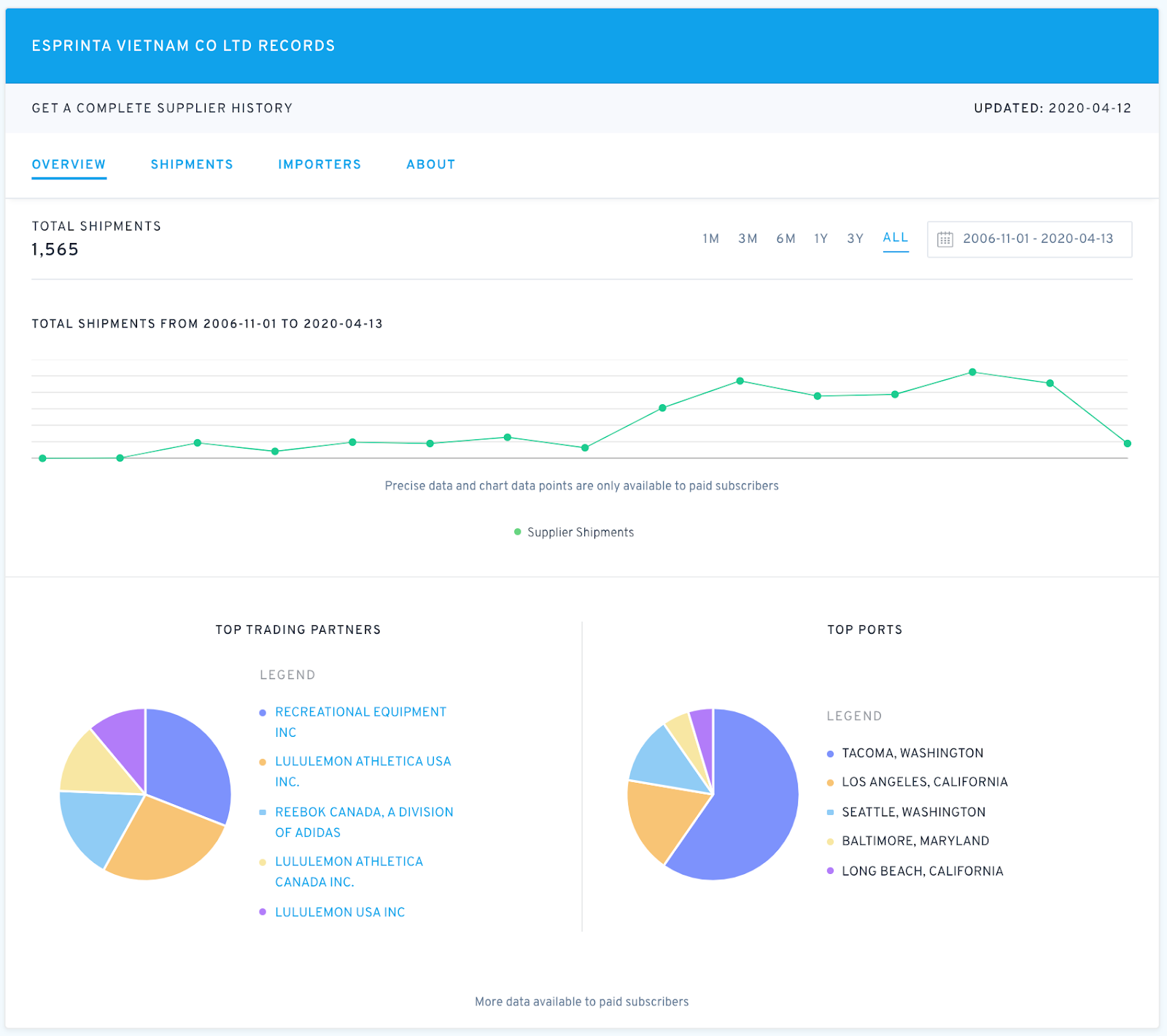
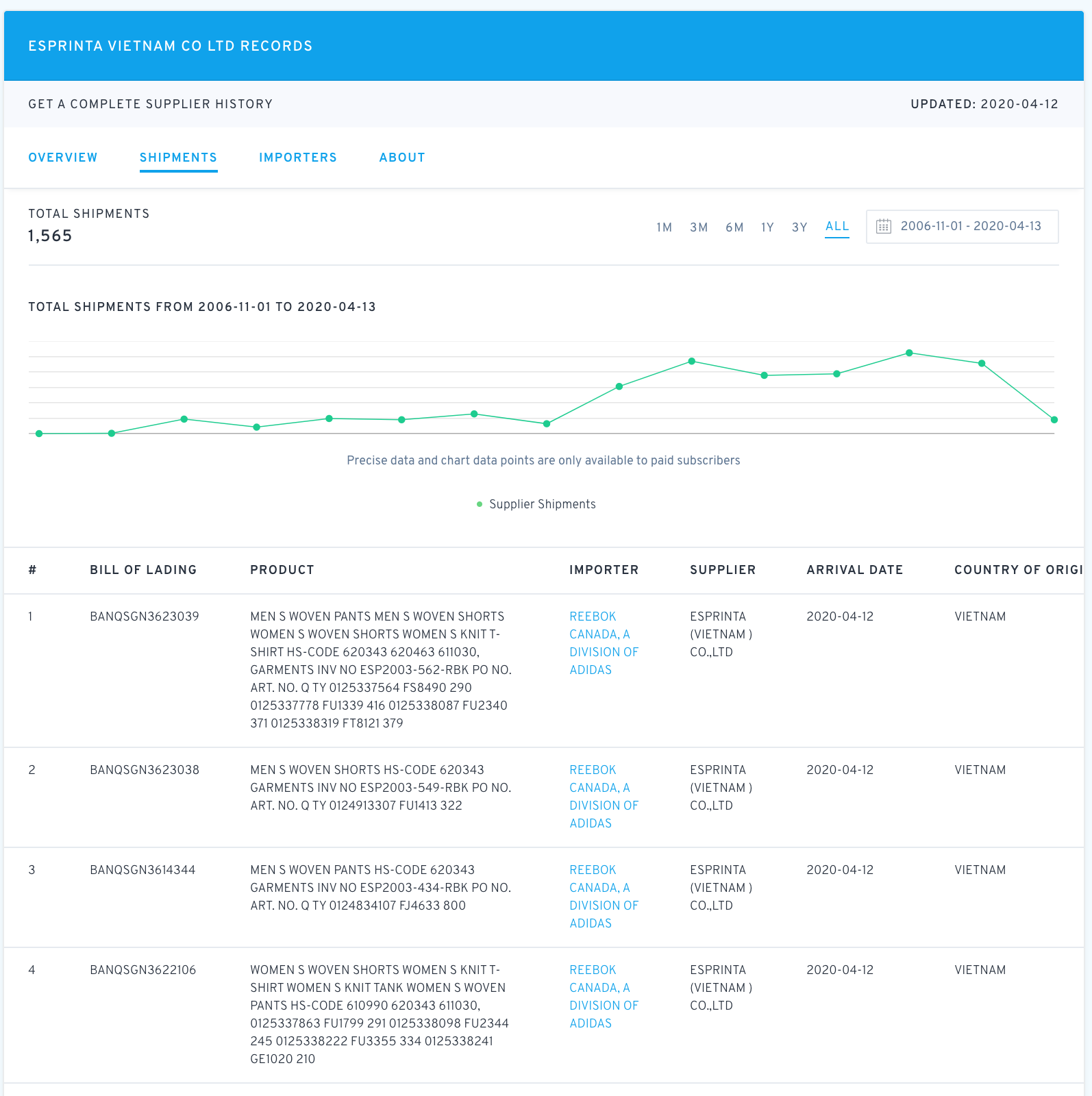
If you are ready to really dive deep into your competitor’s suppliers, ImportGenius’ paid plans allow you to see the complete records of all your competitors–all their trading partners and all their shipments. Just enter your competitor’s name as the consignee in our search engine to bring up all shipments.

We can see the trade relationships between companies via ImportGenius’ visual mapping tool. This will help you see all of your competitors’ suppliers as well as what suppliers are common among your competitors.
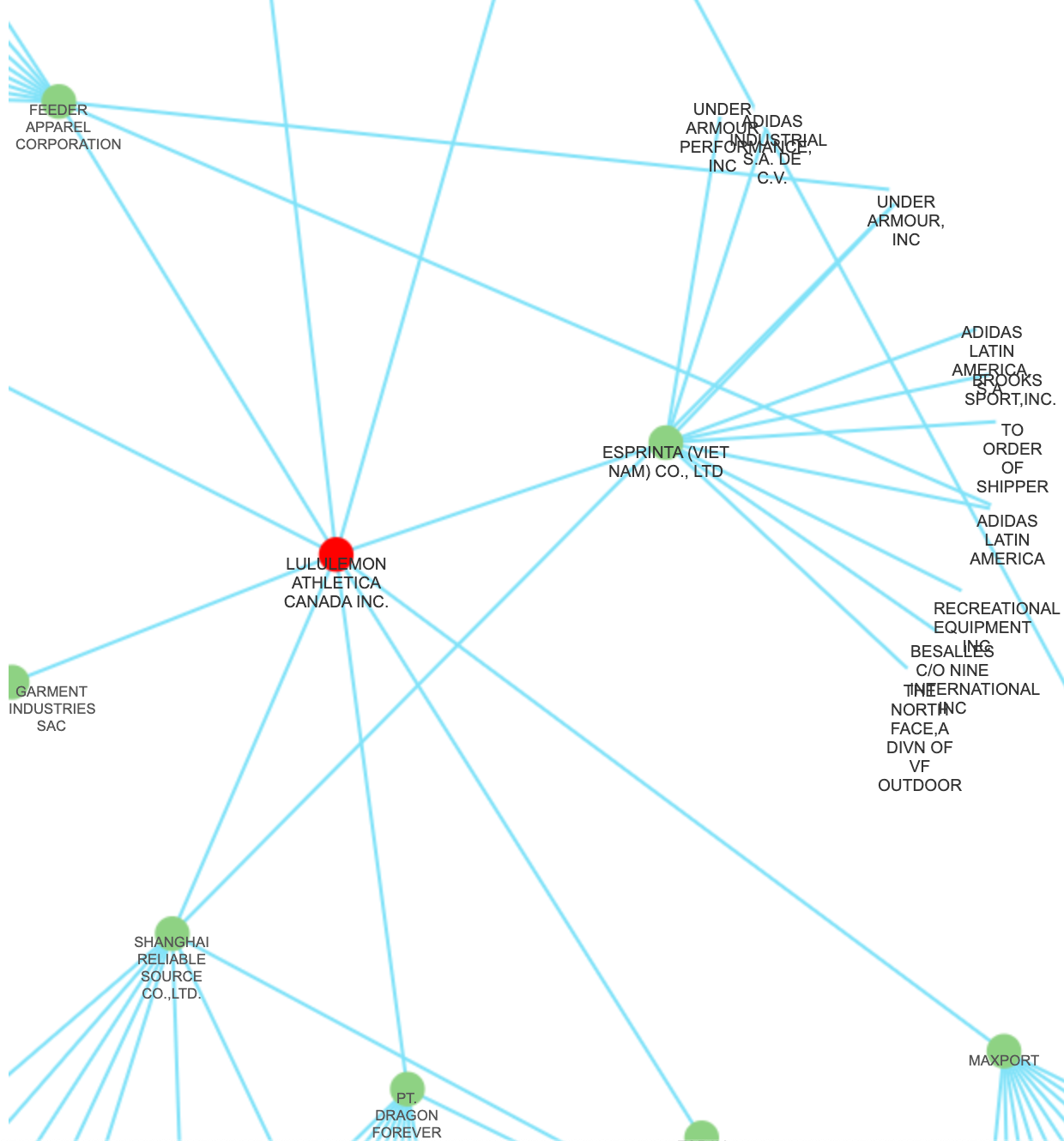
Once you have found your competitor’s suppliers, ImportGenius makes it easy to export all of your search results to an Excel file for you to keep track of or to give to your colleagues in sales or sourcing.

Step 3 - Analyze your competitor’s suppliers
Now that you have a list of your competitor’s suppliers and their shipments, there are a few things you can do:
Look at their country of origin
A supplier’s country of origin can bring you a lot of insight into your competitor’s operations. If your competitor claims that all their products are “Made in the USA,” looking at their shipments can verify that. If you suspect your competitor of using cheap labor in developing countries, a look into their shipment history can unravel that theory.
Estimate their production capacity
Does your competitor use proven suppliers with established track records with proper factories? Or are their suppliers just small fly-by-night operations? One way you can try to understand this is by looking at the volume of the shipment history of each supplier. Large, established suppliers will tend to have regular shipping schedules with large quantities of goods per shipment. If they have regular high volume, high value shipments with their consignees, that is a good sign that they are an established entity with a proven track record among their distributors. On the other hand, if the supplier only ships in small quantities to consignees you don't recognize, then that’s a good sign those suppliers may not have a solid track record of shipping quality products.
Identify their role in your competitor’s supply chain
Is a particular supplier just shipping raw materials or finished goods? A look at the actual products in their shipments can tell you that. Combined with your own unique knowledge of your market, this can help you understand your competitor’s cost structure.
Monitor their activity
Once you have identified specific suppliers you may be interested in, you’ll want to be notified whenever they have new shipments. ImportGenius makes this easy with Email Alerts. You can create email alerts that email you whenever your competitor receives any new shipments, whenever a specific supplier has a shipment that enters the US or even when a product that you are monitoring has a new shipment. These email alerts can be tailored to your needs. Since ImportGenius gets its data daily directly from US Customs, you can rest assured that you will be able to see your competitor’s shipping activity as it happens.
Contact their suppliers
If there are specific suppliers that you may want to poach or talk to, you can contact them directly from ImportGenius. This information isn’t just contact details that you can easily get from LinkedIn. Our team of trade experts will find the contact information of the key people you need to talk to in the companies you are most interested in. ImportGenius users can request the contact information for up to 50 companies per month–all part of their membership.
Use ImportGenius trade experts
As the pioneer in trade data services, ImportGenius has a seasoned team of trade experts and researchers. Our team was the first to break the news of Apple’s release of the iPhone in 2007–all from studying Apple’s shipment history (something Steve Jobs wasn’t all too pleased about). Our trade research team based in Scottsdale, Arizona has uncovered everything from counterfeiting in Russia to shipments of document shredders to Jeffrey Epstein’s island. With more than 10 years of shipping data at your fingertips, it can be overwhelming to understand and find opportunities. The ImportGenius data team is more than willing to help out our users. A dedicated trade expert is never more than a phone call away.
With the tools available to businesses in 2020, competitors no longer have opaque supply chains. Whether you are just starting out a new venture or have been in business for decades, there is no reason not to have visibility into your competitor’s supply chains. Start your research now on the ImportGenius tradebase.
If you like this article and would like to know more about how shipment data can help your business, or if you want to see ImportGenius in action, you can check out our facebook page and request a demo.
